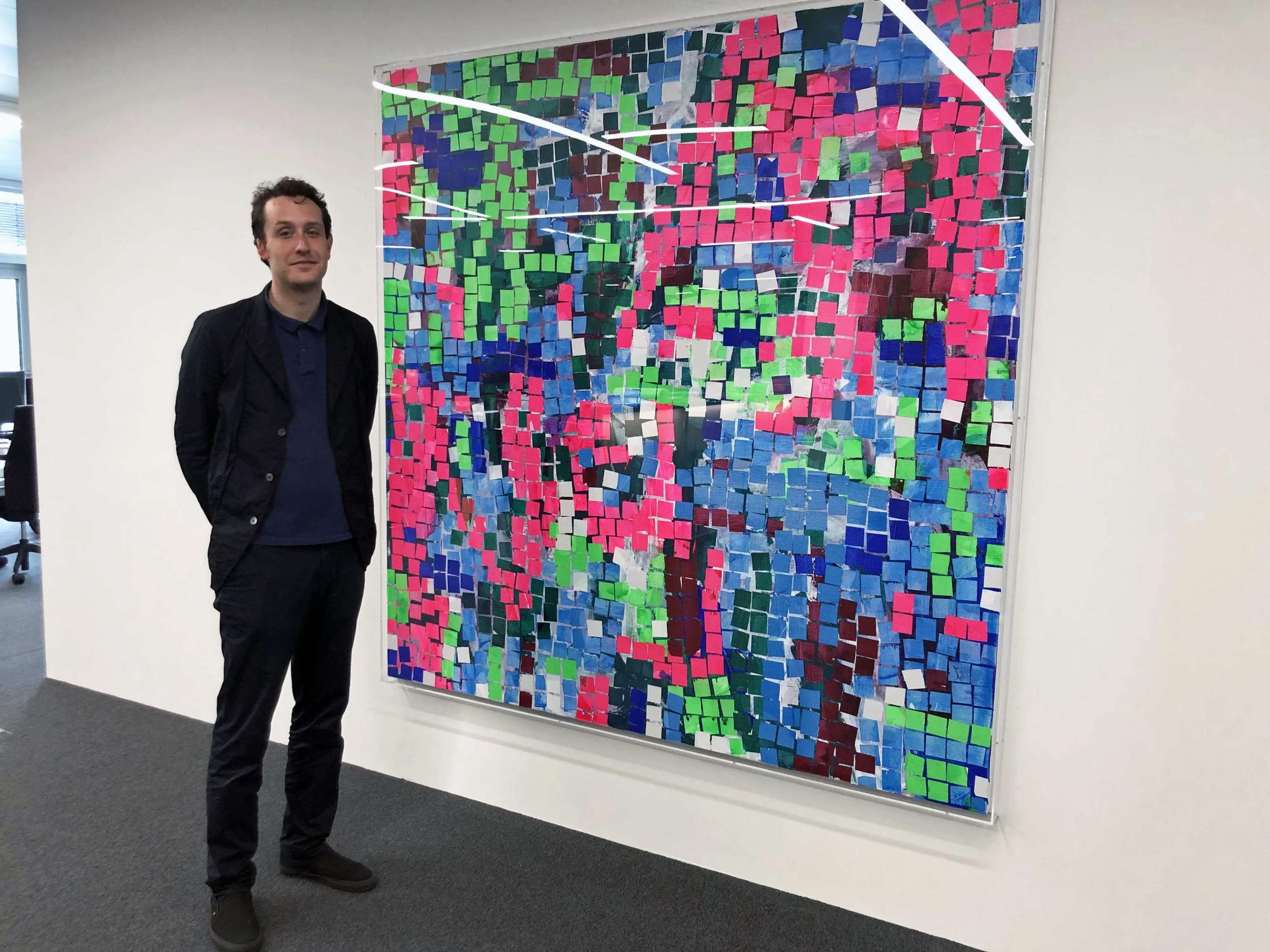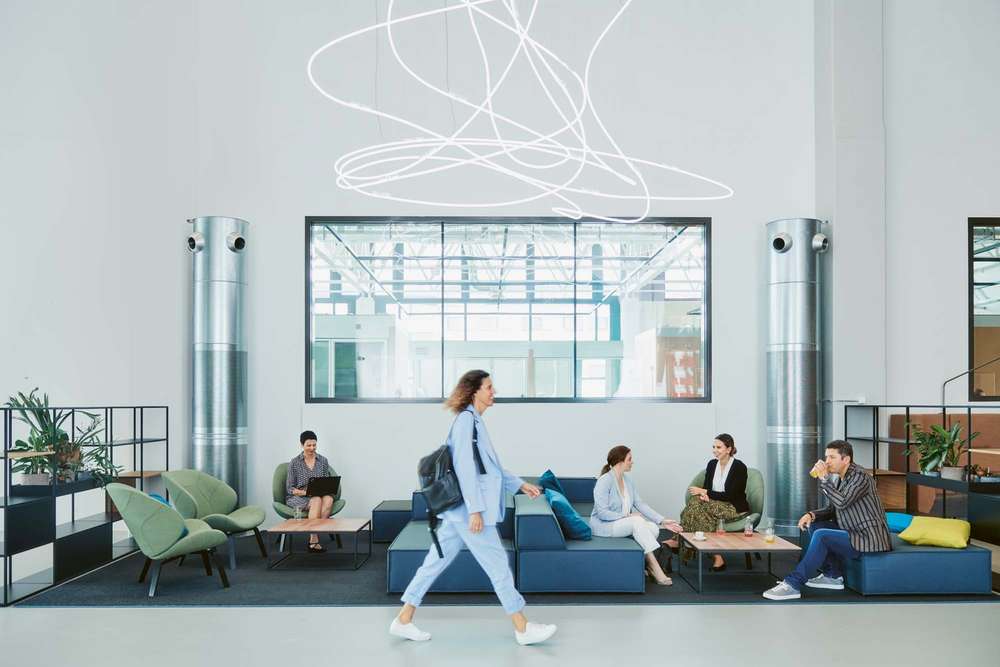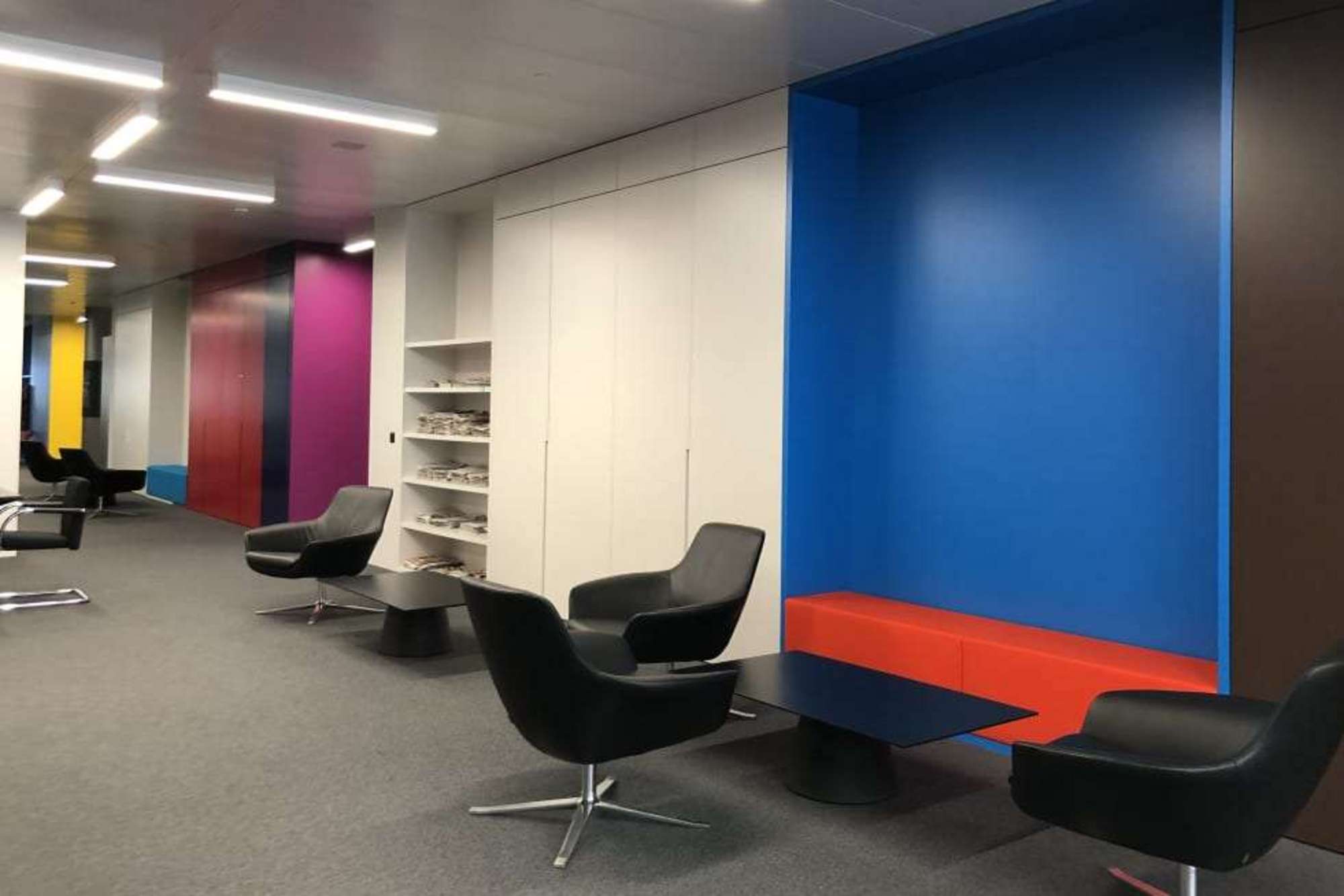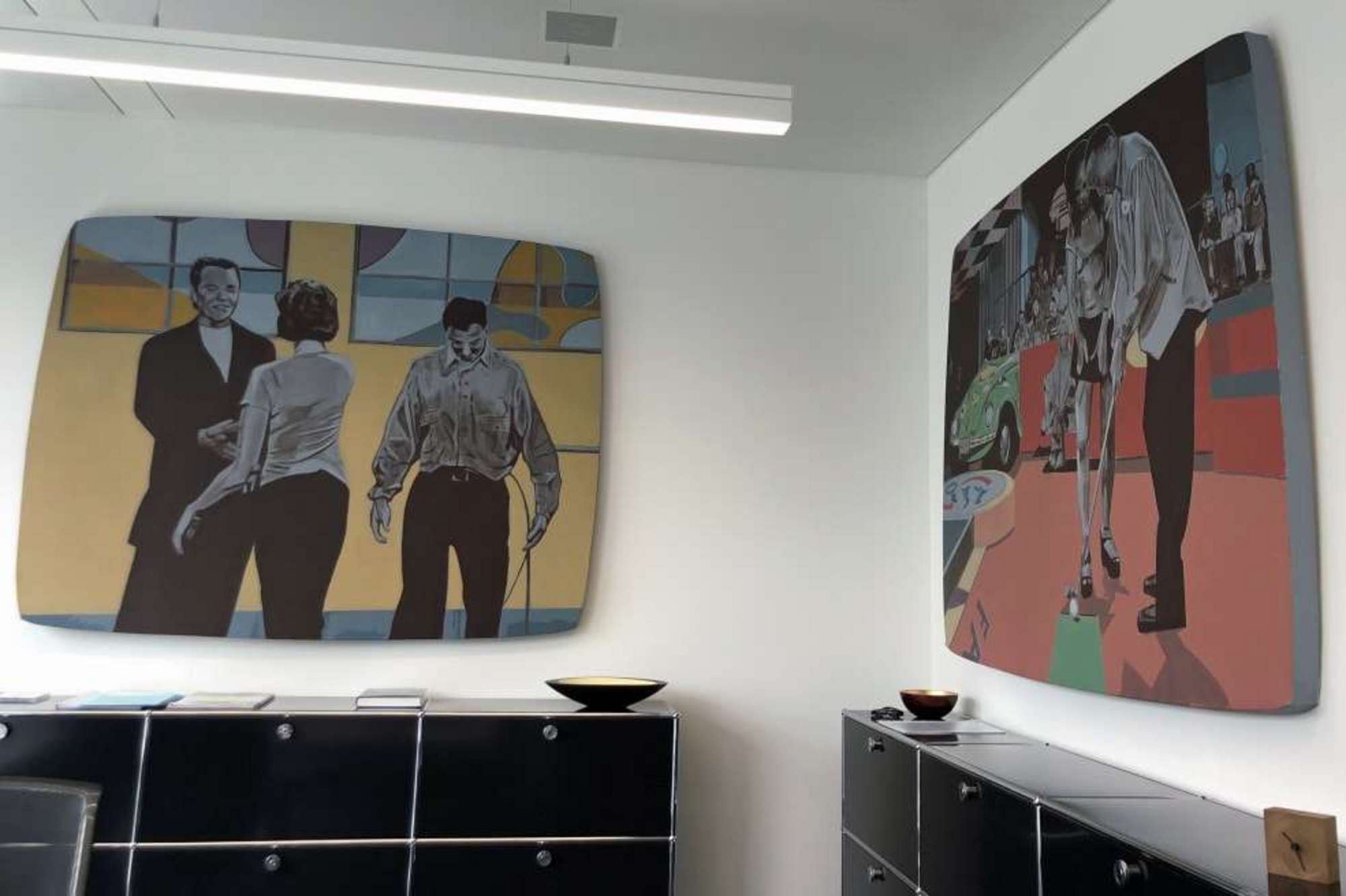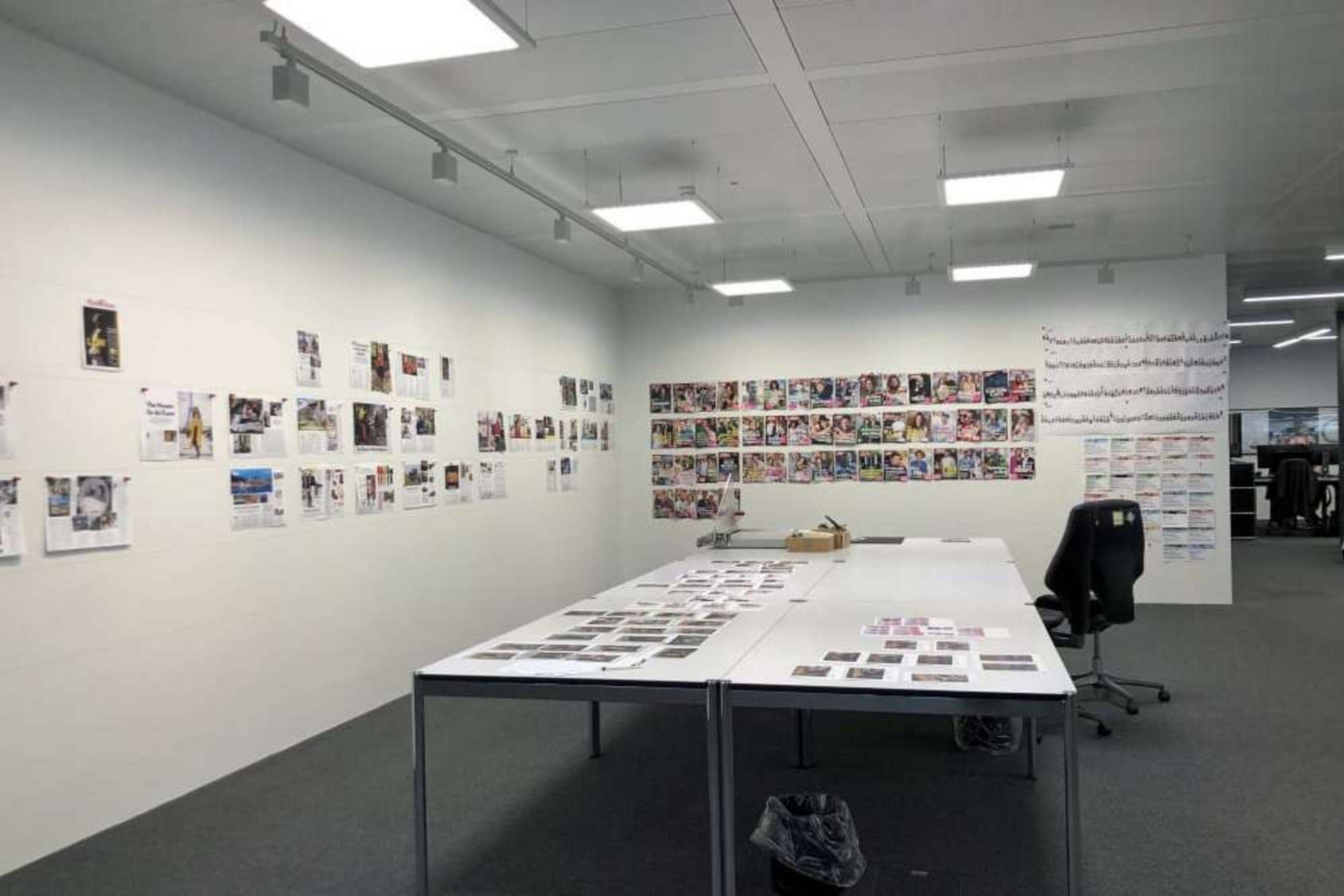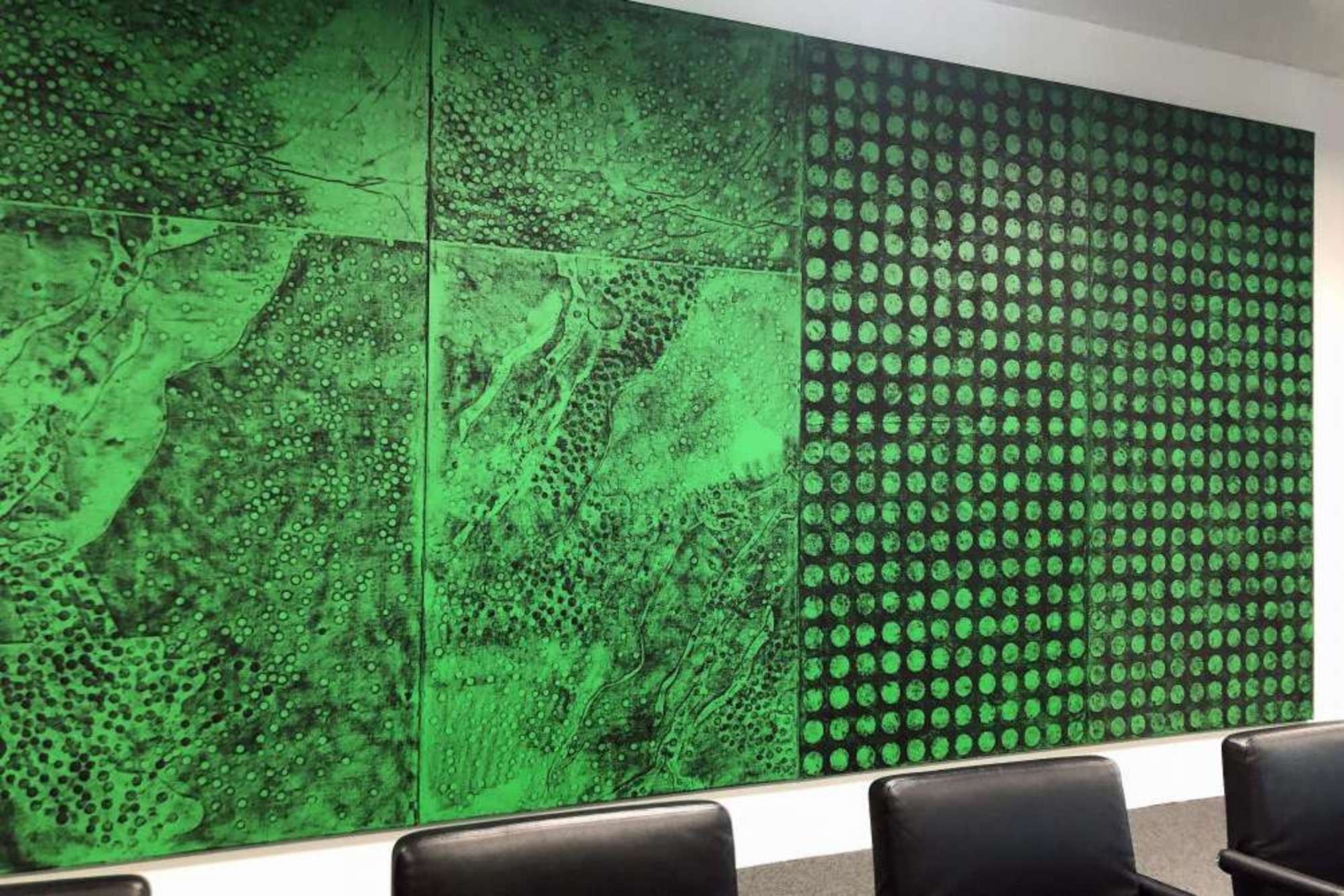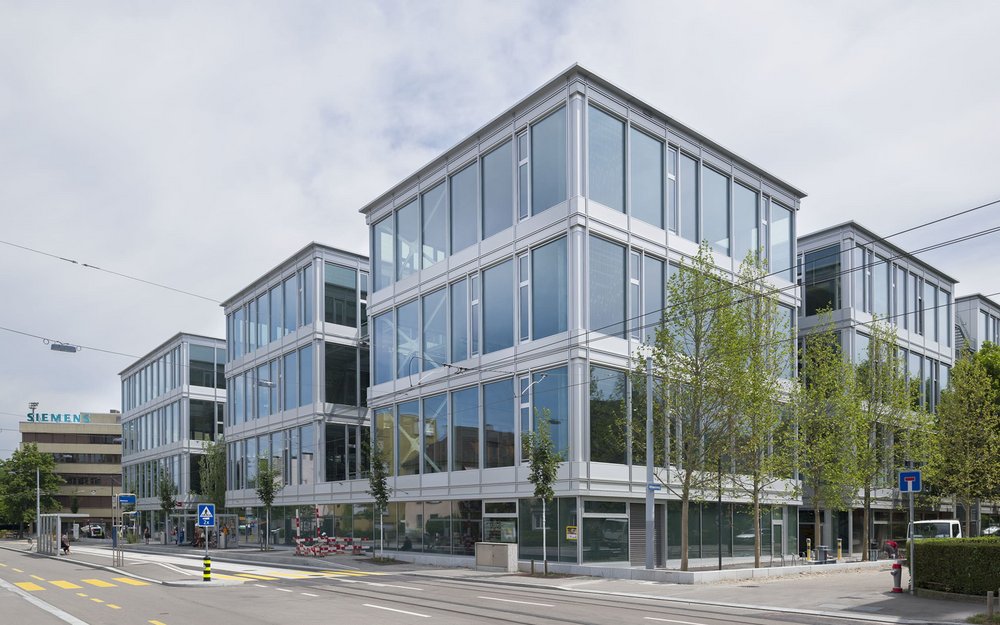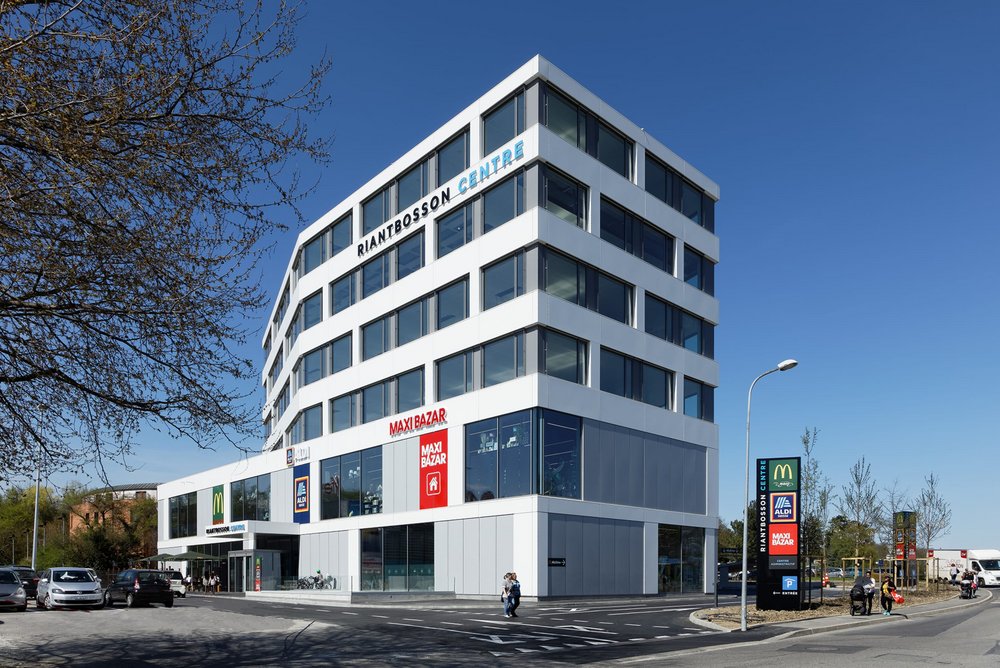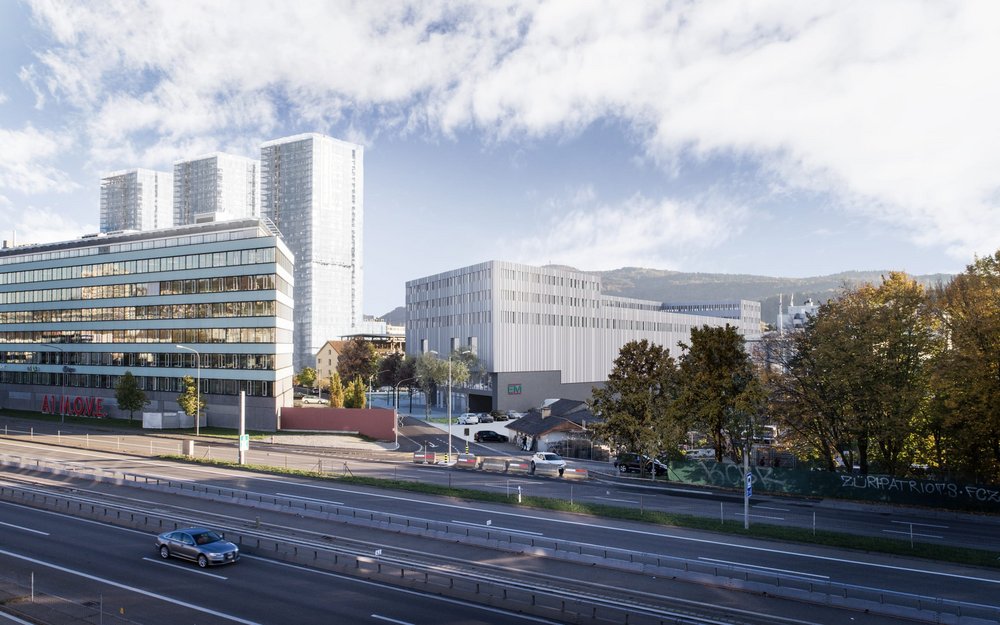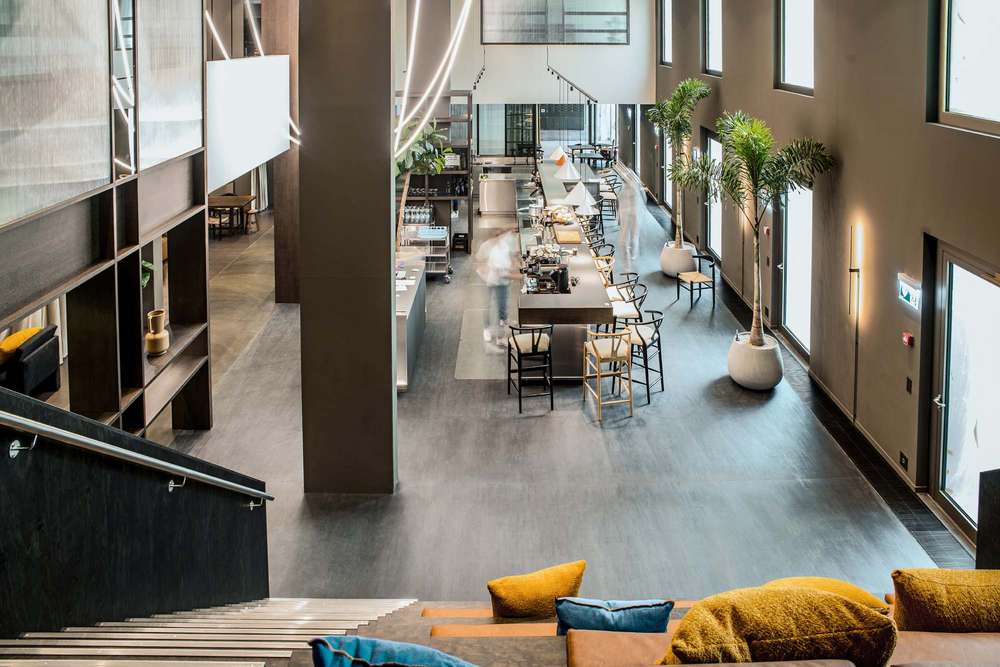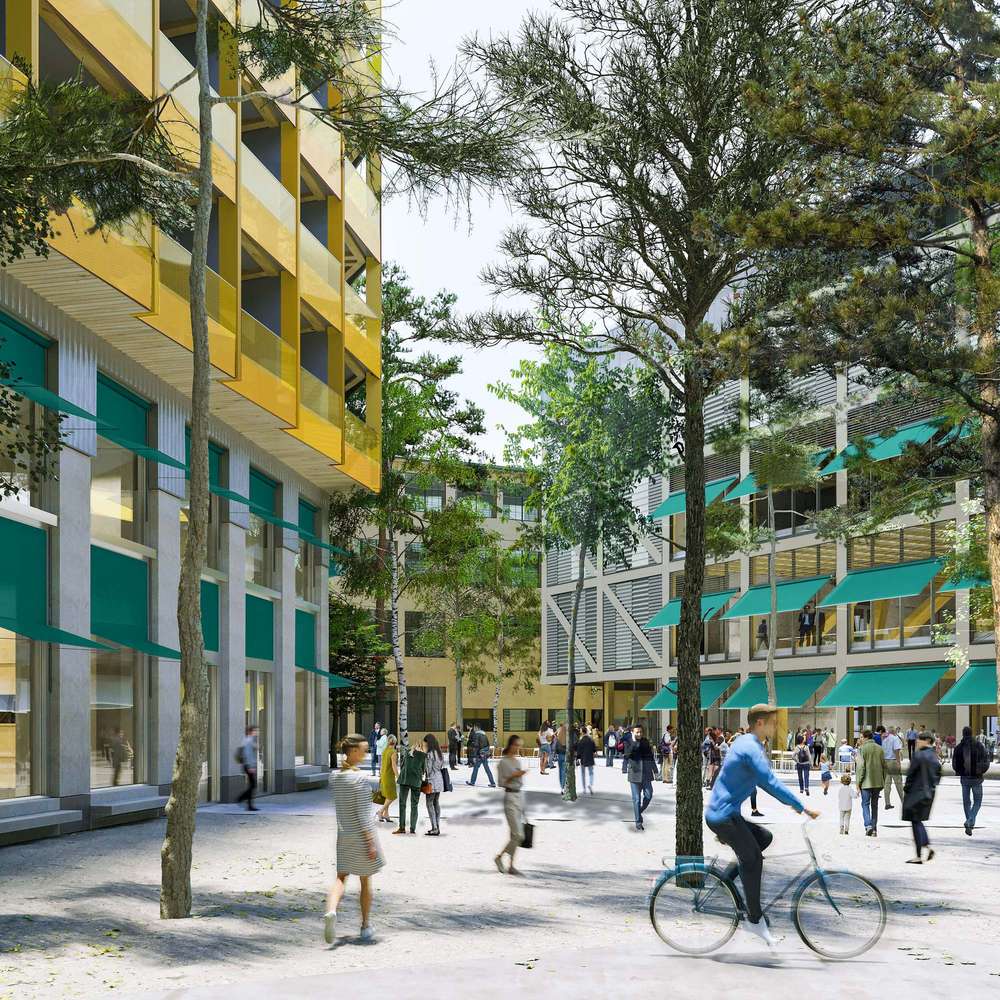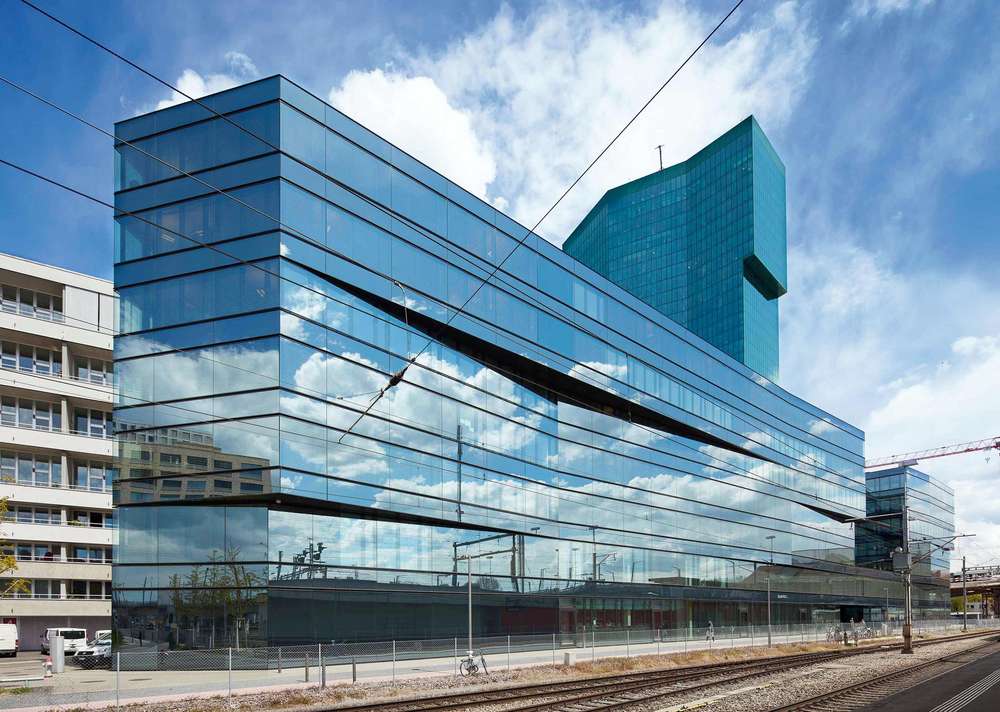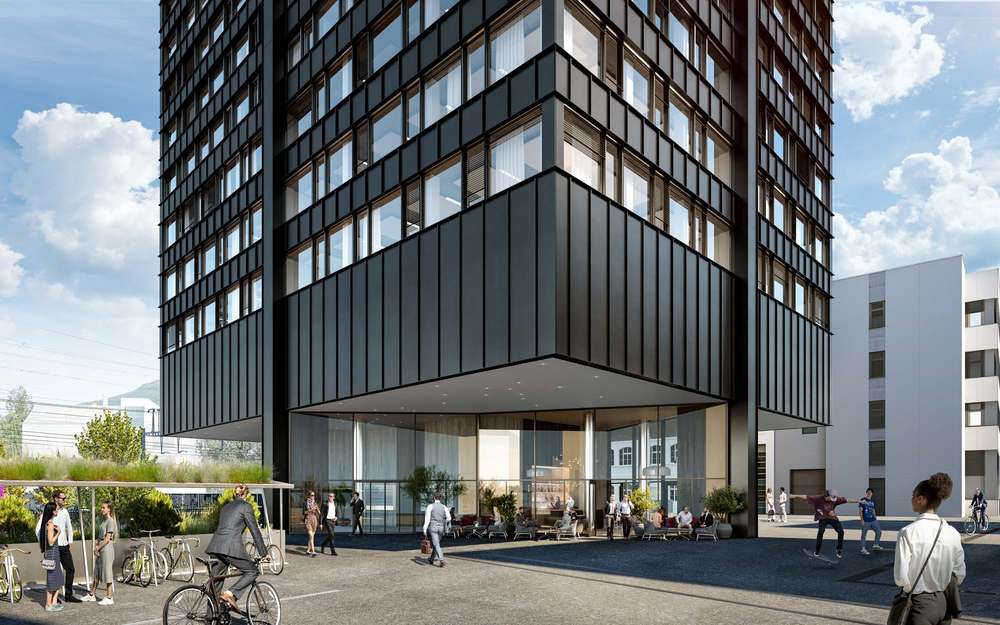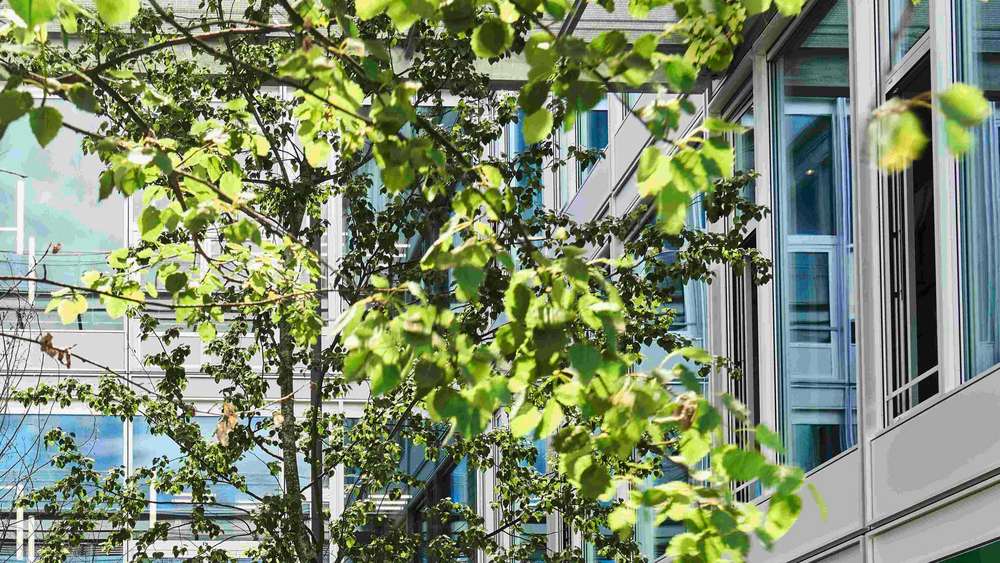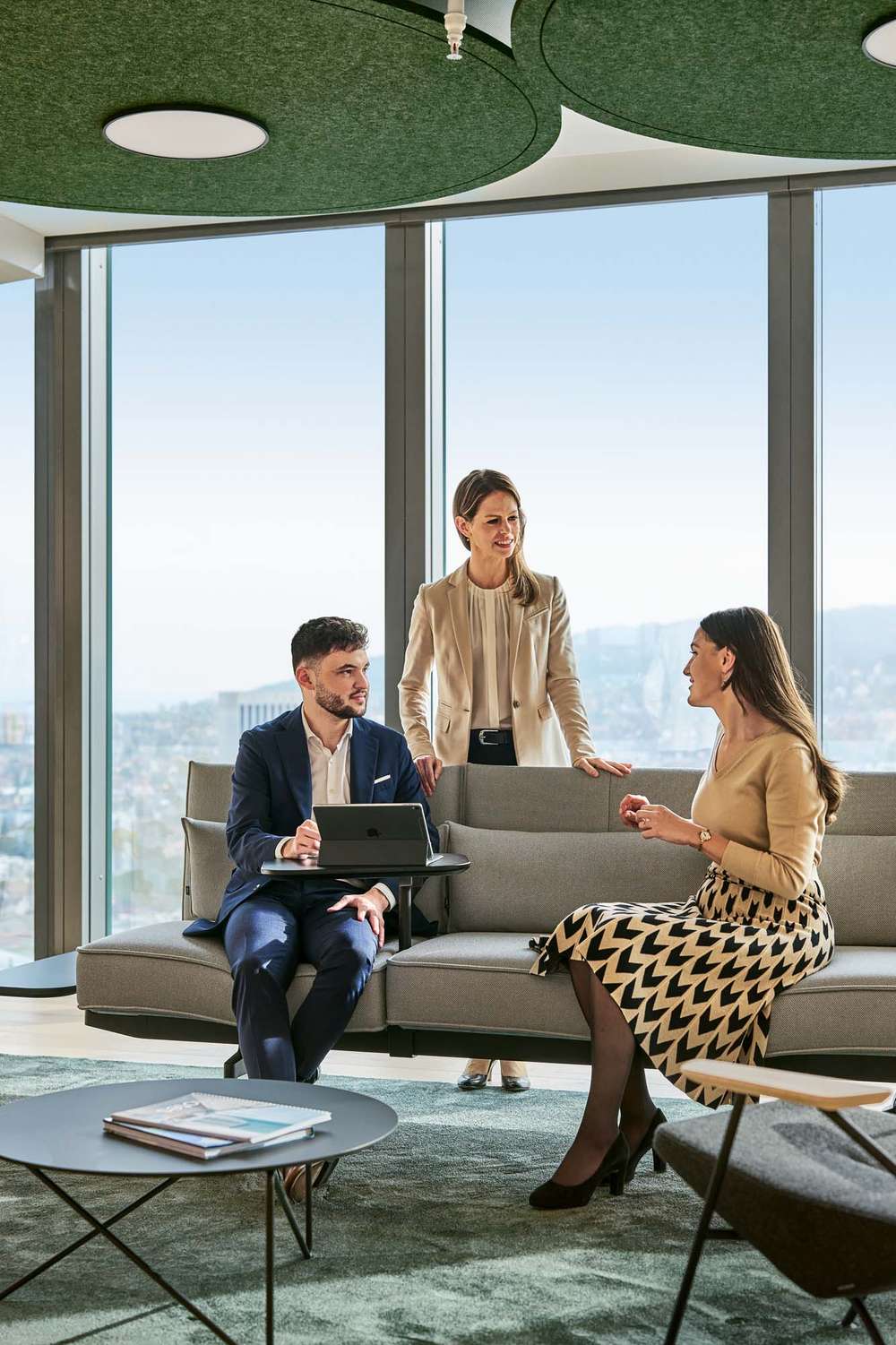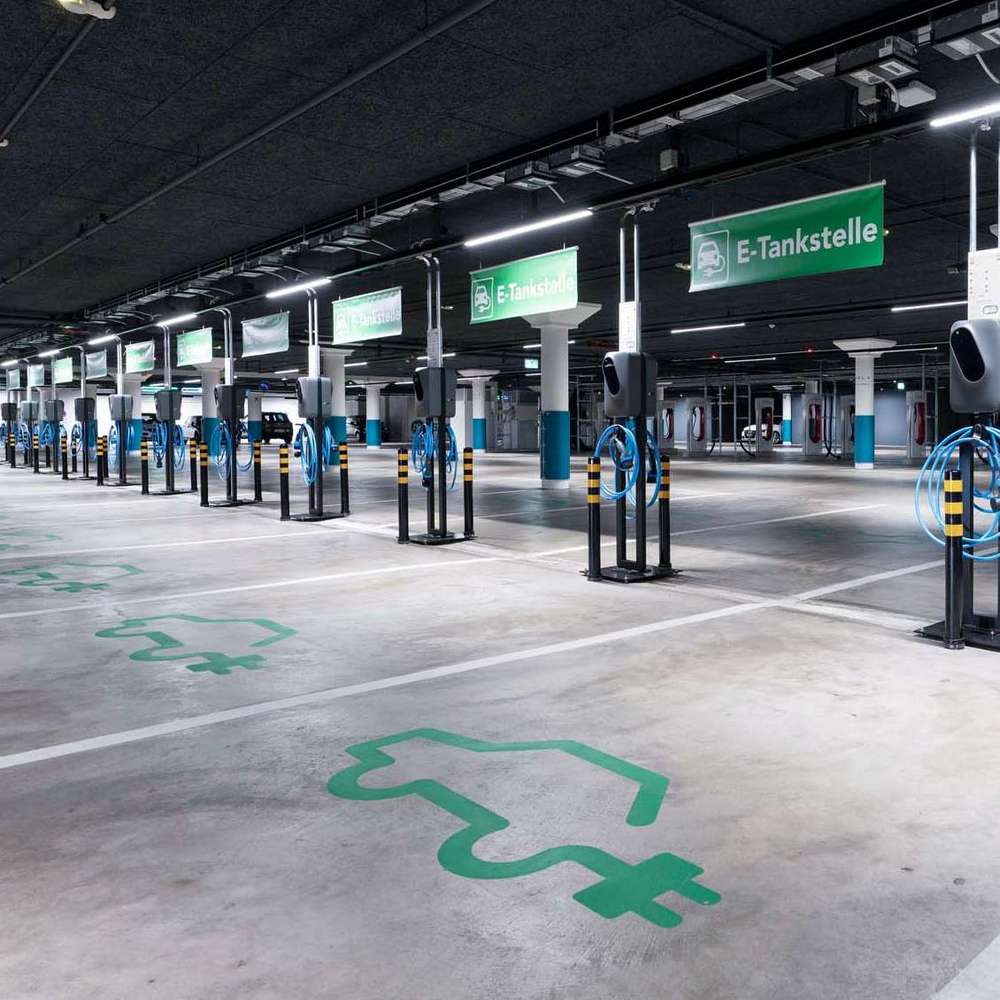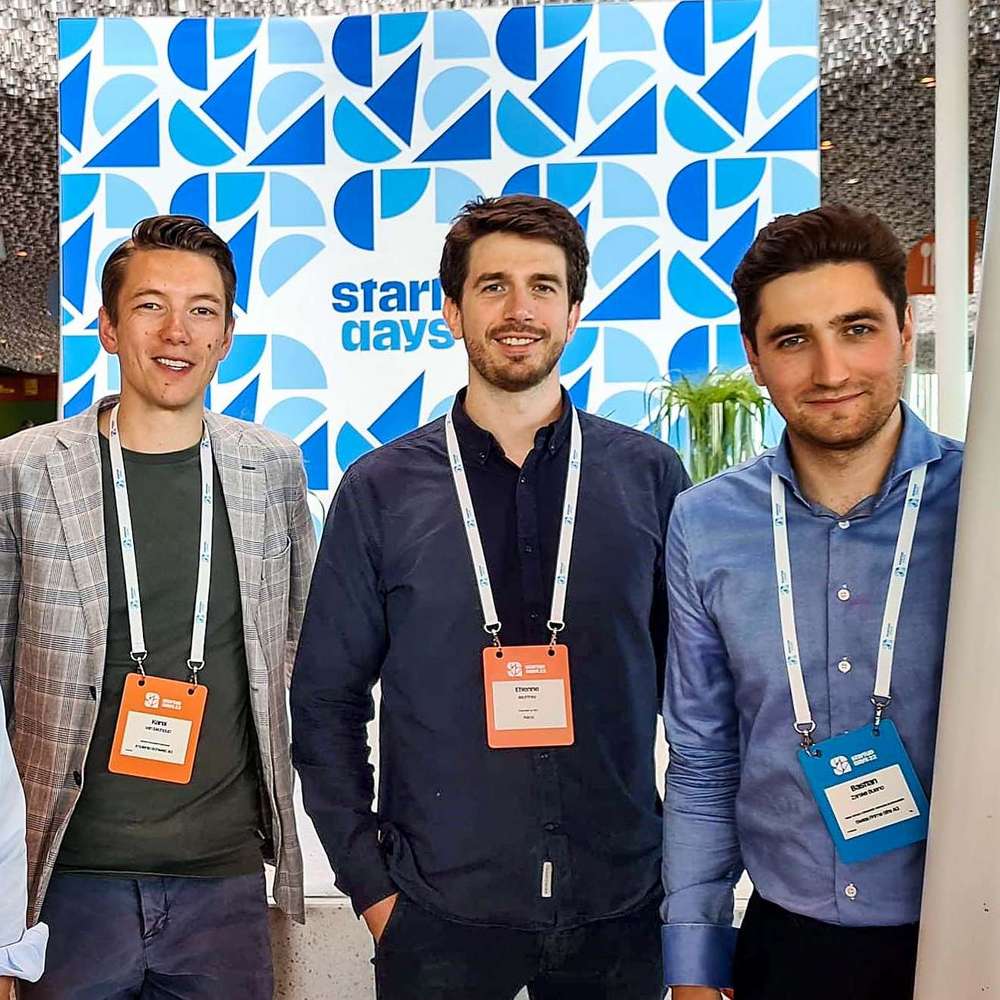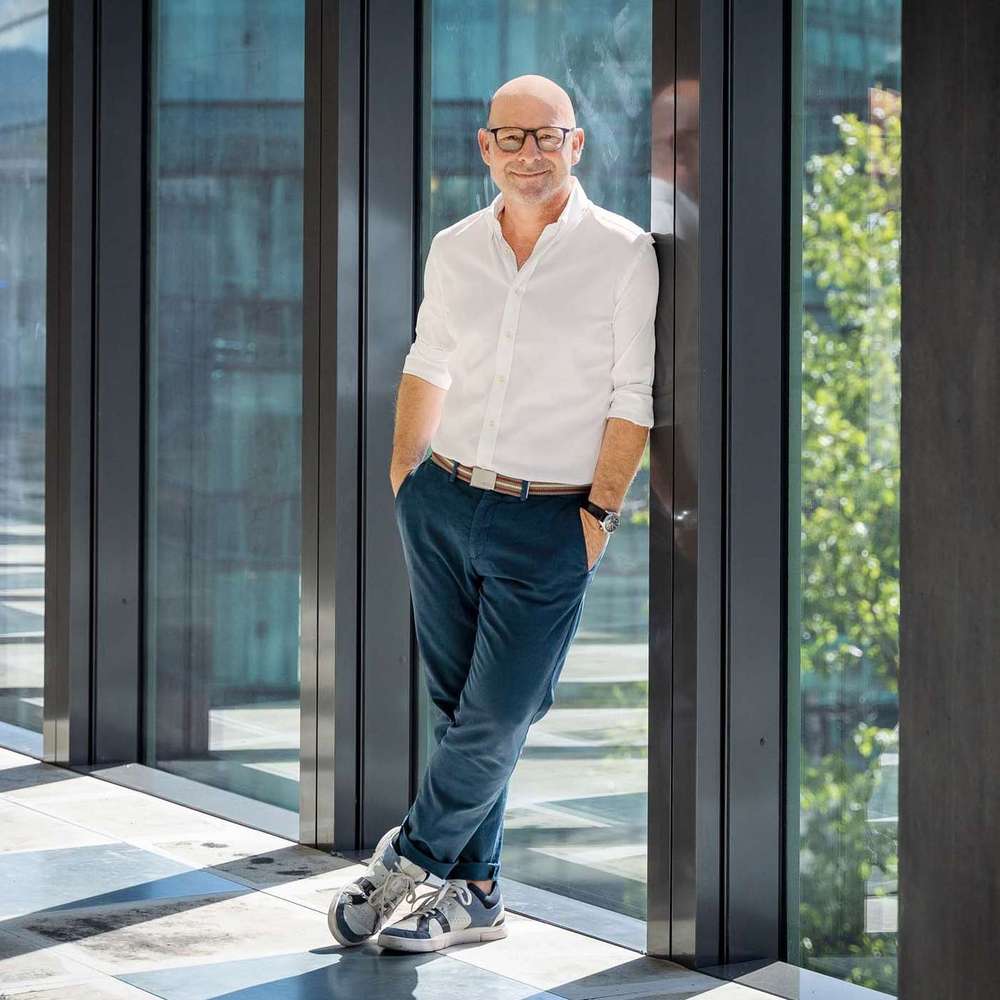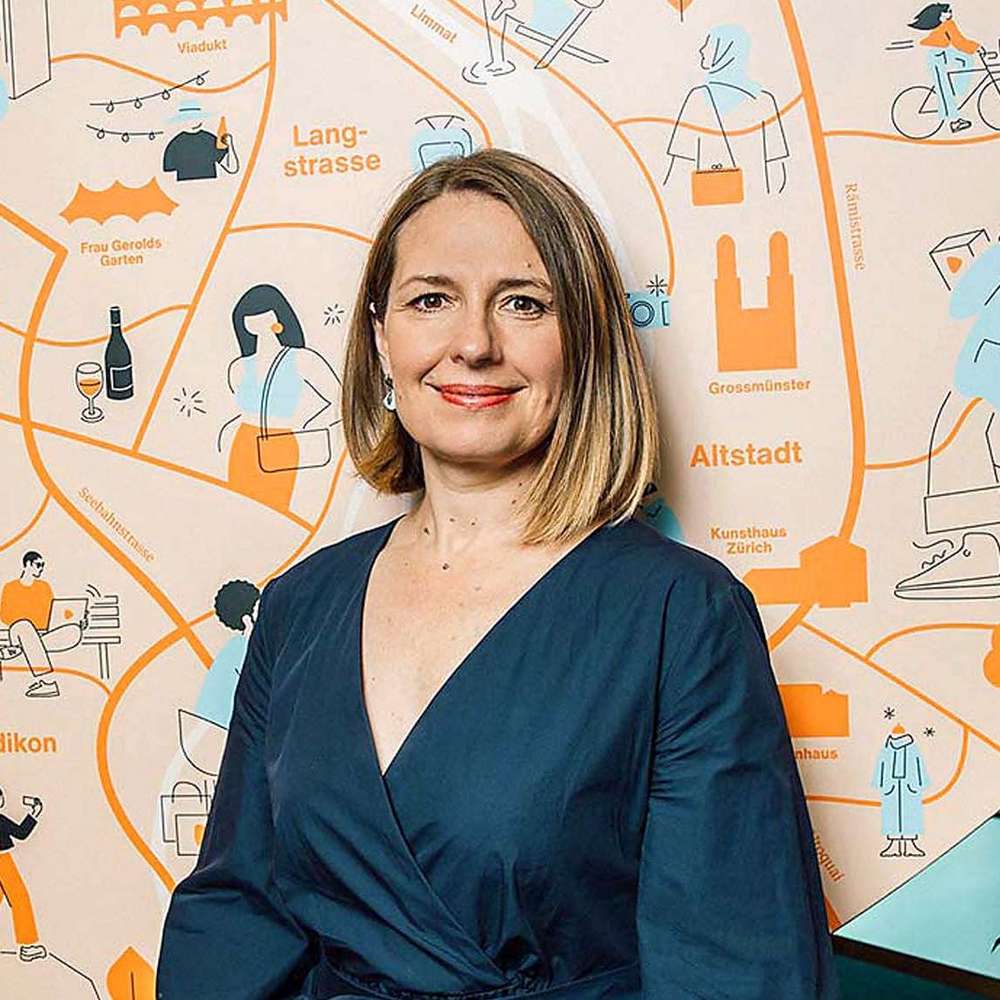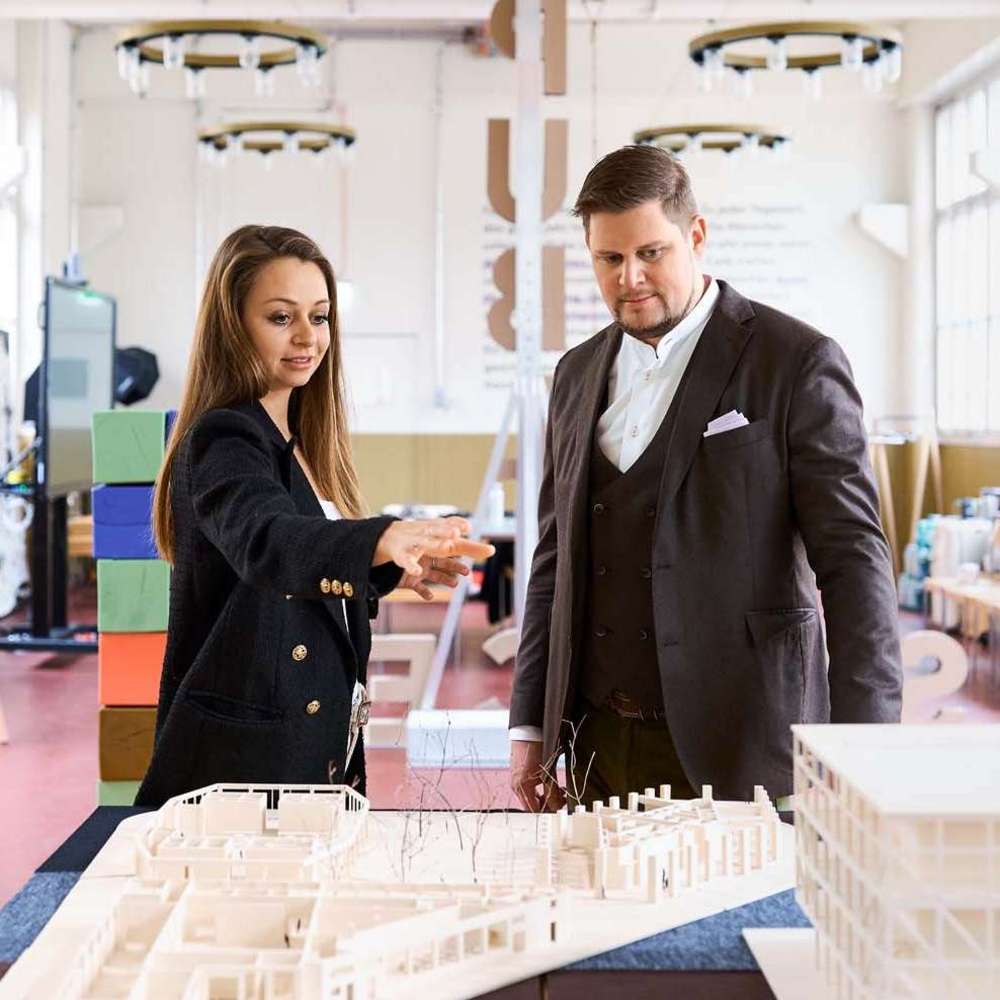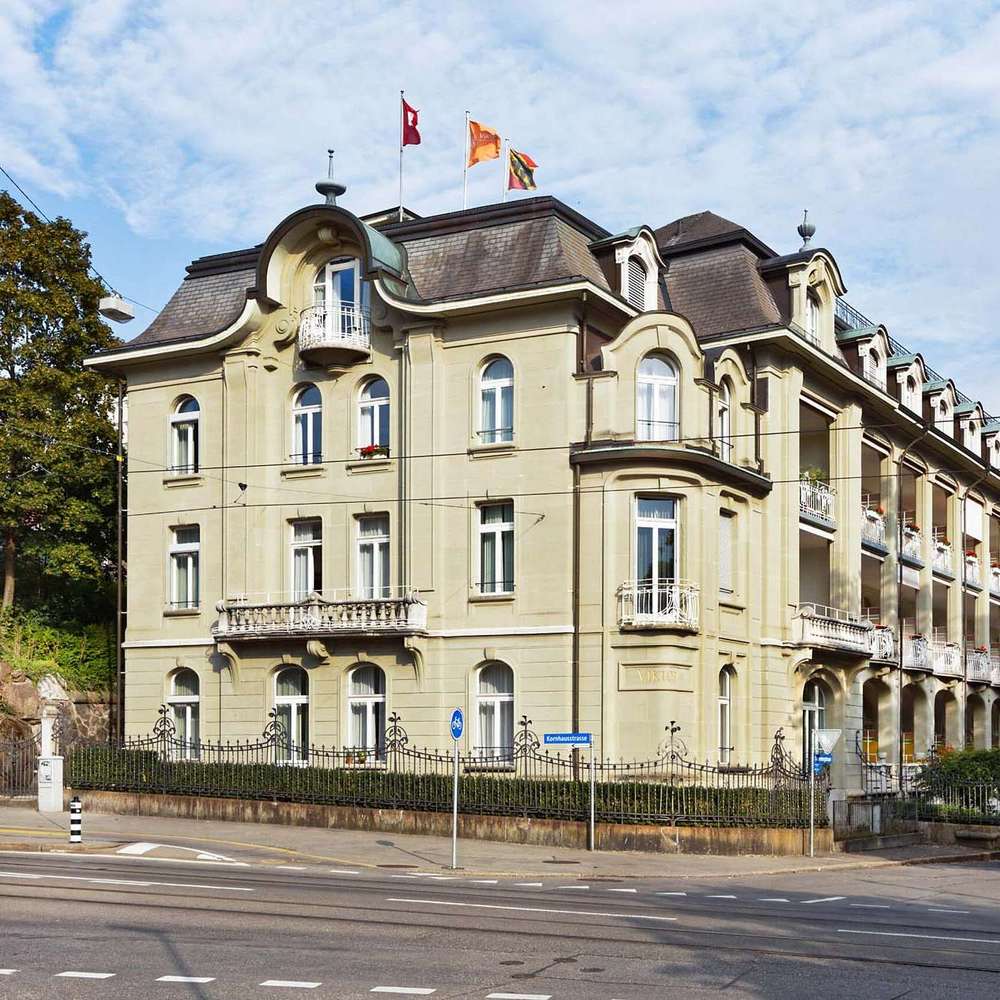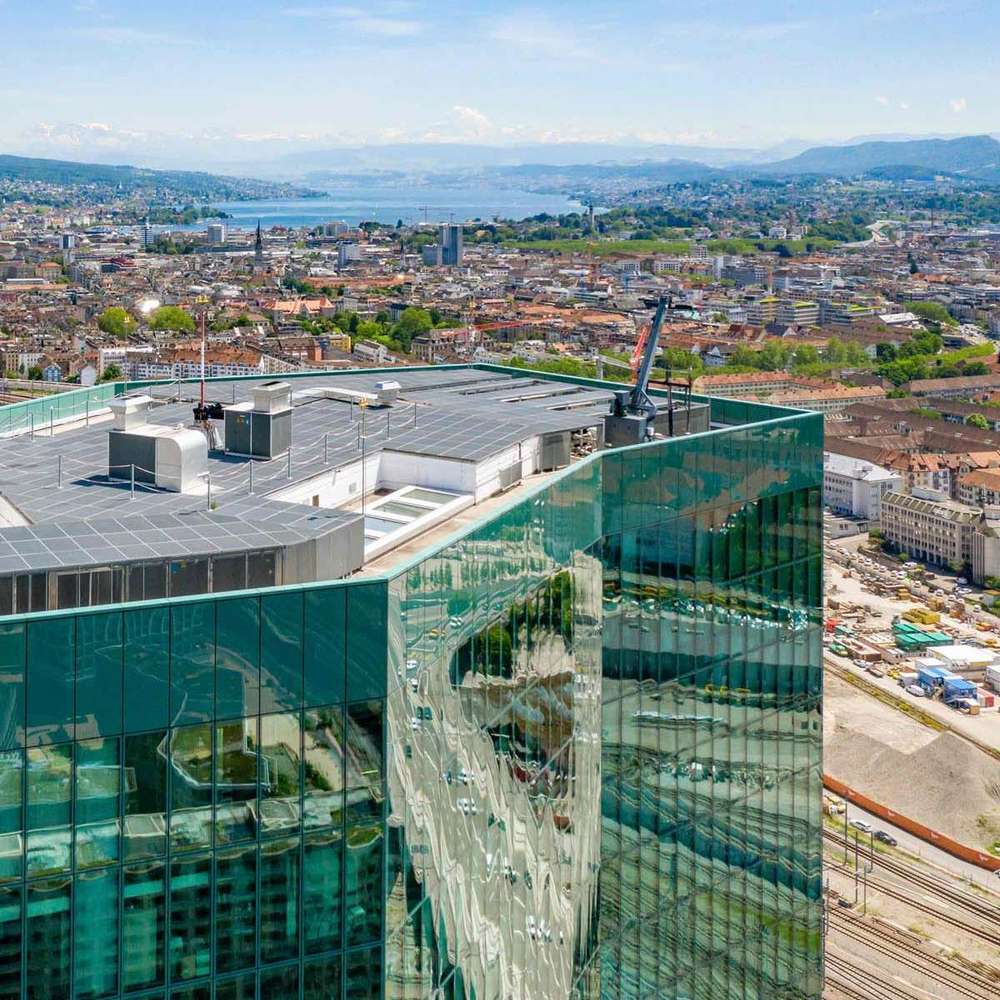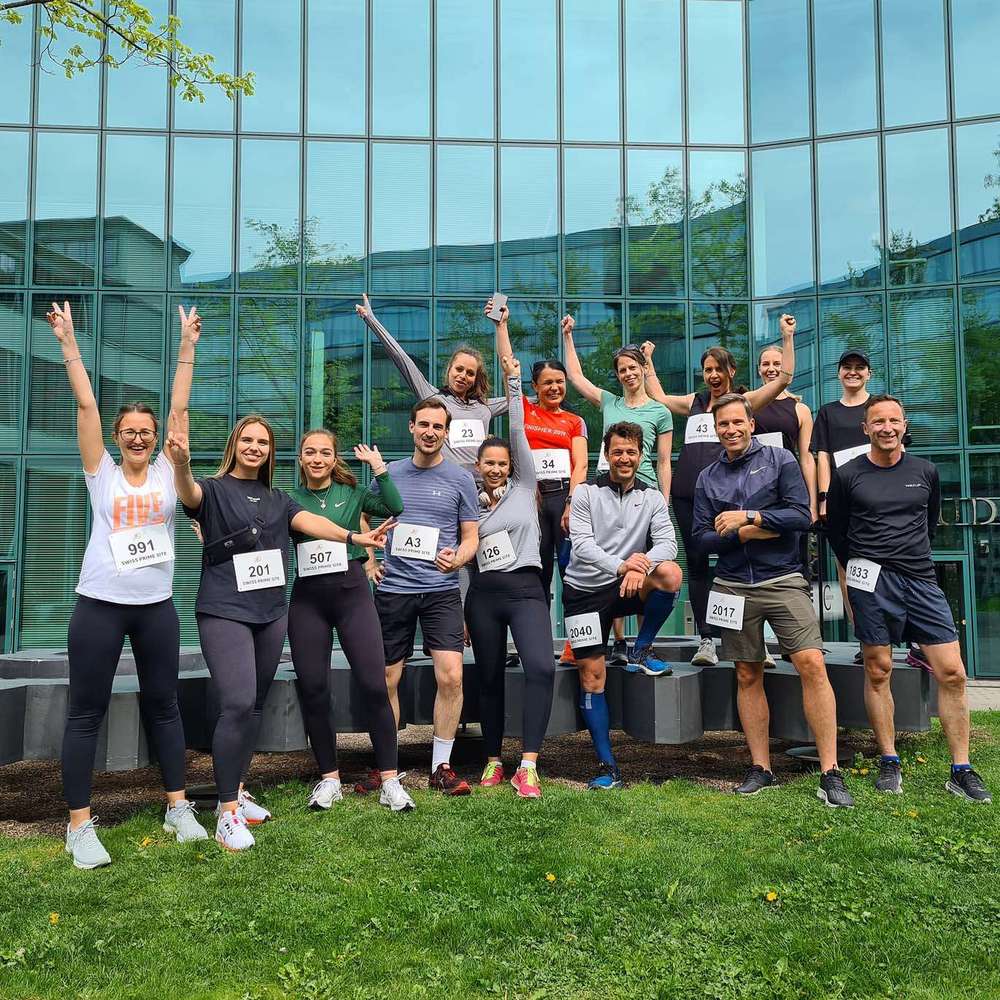«It’s there for everyone»
This building is the workplace for some 550 employees of Ringier Axel Springer Schweiz, the joint venture formed by Ringier AG and Axel Springer SE in 2016. Together, they have formed the largest magazine publishing house in Switzerland, producing 30 titles with a total of 880 editions every year. The modern office building at Flurstrasse 55 also houses a wide-ranging selection of contemporary artworks. Join us on our viewing of a collection that is intended for everyone.
Since 2017, the majority of employees of Ringier Axel Springer Schweiz have worked from the company’s premises in Zurich Altstetten. In just two years, Swiss Prime Site turned what was once a dreary office and IT complex into the Medienpark. But it’s not just the exterior of the glass-fronted building that shines. With its façade insets and a clever arrangement of office space, the building offers highly appealing, sought-after workplaces across five extra-high storeys. And the Ringier Axel Springer Schweiz section of the building captivates further with a colour concept that artist Shirana Shahbazi developed specifically for the space, as well as numerous artworks. With almost 100 pieces from the Ringier collection on display, the building also has plenty to offer from within, inspiring the employees who come into daily contact with them to pause, reflect and contemplate.
3 000 artworks in over 30 years
Michael Ringier, whose family owns the Ringier media group, is a passionate collector of contemporary art. He began in the 1980s, working piece by piece to amass a collection that today encompasses around 3 000 works. «We aim for depth in our collecting. For the artists represented in the collection, we usually have multiple groups of works from different creative phases that together are representative of their entire oeuvre. We follow artists as they develop and maintain an academic approach», explains Arthur Fink. He is the Assistant Curator at Ringier and has an overview of the entire collection.
The private collection turned «professional» in 1995 and is today considered one of the most important in Switzerland. But it is Michael Ringier’s promise to make the art accessible to «everyone» that makes it unique. In this regard, «everyone» means the thousands of employees across the company’s different locations and offices. As well as the Zurich sites in Seefeld and the Medienpark in Altstetten, other locations boast an impressive number of artworks in their entrance lobbies, corridors, meeting rooms and offices. «While Michael Ringier personally decides on every acquisition and loan, we are there by his side to advise him», says Arthur Fink. When he says «we», he means the small team within the family company working part-time or full-time to maintain the collection and everything that goes with it.
Art and journalism – non-identical twins
Visitors to the Medienpark and other Ringier sites in Switzerland may well ask – what does art have to do with journalism? But the more pertinent question might be – how do you ensure that valuable artworks survive unscathed in a busy, if not hectic, working environment? But Arthur Fink isn’t concerned. «There hasn’t been any malicious damage to the artworks yet. Where necessary, such as when a large painting is located at a critical exit, we protect it with Perspex. This prevents scratches or other careless damage to the artwork.»
When he considers the link between art and journalism, he takes an almost philosophical turn. For his boss, the two go hand in hand. Artists interpret the present day in their work and, in so doing, attempt to draw future observers closer to their view of things. «Artists capture world events, and process them in a way that enables the public to arrive at new perspectives of societal phenomena. They, too, are responding to the things going on around us every day», says Fink. At the same time, journalists seek to understand current events from their perspective and try to share something of the world in all its complexity with readers. This then manifests in a piece of text that at heart may correspond with or approximate a painting, a sculpture or statue.
Silent witnesses to hectic office life
Michael Ringier wants the works in his collection to accompany employees at the company, ideally to inspire them. This means that the artworks can’t be too imposing, something that becomes readily apparent as you go around the Medienpark. Although some of the works are very avant-garde, colourful and unusual, they are never loud or off-putting. «Many employees see the artworks as silent witnesses to their daily working life. And that is precisely what Michael Ringier had in mind», says a satisfied Arthur Fink.
